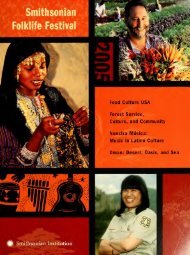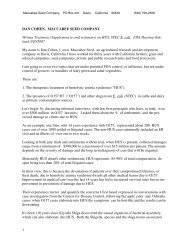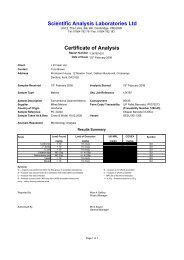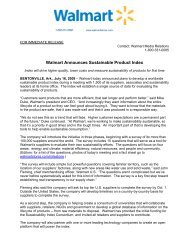here - Perishable Pundit
here - Perishable Pundit
here - Perishable Pundit
Create successful ePaper yourself
Turn your PDF publications into a flip-book with our unique Google optimized e-Paper software.
grown foods (for a number of reasons, suchas persistent residues in soil that last formany years, some organic foods may stillshow residue).Other studies show the environmentalbenefits of organic agriculture to air, soiland water, lowering the total toxic burdento our ecosystems. As demand for organicfoods continues to grow, more farmers arelikely to view organic methods as a viableand marketable option, helping to stabilizesupply and price.2. The link between pesticide residues on fruitsand vegetables, and health effects, including:a. Scientific evidence linking pesticideresidues and health effectsb. The adequacy of the U.S. regulatory systemfor protecting against harmful levels ofpesticide residues, including effects toinfants and children.3. The evidence that organic foods have agreater nutritional quality than conventionallygrownfoods.It adds up to an evolving landscape thatincreasingly allows for--and makes acompelling and credible case for--includingorganic foods in children’s diets wheneverpossible. As concerned parents, teachers,administrators and foodservice professionalscreate and insist on innovation and reformin school lunch programs, organic foodsmake sense as part of the picture.”Regrettably, citations to scientific studies werenot provided in the above to support thesestatements, complicating their criticalevaluation.OTA has an additional document on pesticideexposures and children that focuses on studiesthat find lower pesticide exposures for thosethat have organic diets and cites several studiesthat conclude that t<strong>here</strong> health effects associatedwith pesticide use for farm workers.Charge to the PanelThe panel was asked to address the followingissues:1. The basis for the EWG ranking of thecommodities by pesticide residue levels/numbers to come up with the list of 47 fruitsand vegetables, including the “dirty dozen.”Charge Question #1 – Is the basisfor selecting the “dirty dozen”scientifically sound?EWG briefly describes its methodology forselecting the list of 47 fruits and vegetables,including the “dirty dozen” on the“Methodology” portion of its Shopper’s Guideto Pesticides webpage. Data from the U.S.Department of Agriculture (USDA) PesticideData Program (PDP) and the Food and DrugAdministration’s (FDA) Pesticide RegulatoryMonitoring and Total Diet Study Programs wereused as the basis for characterizing the numbersand levels of residues of pesticides on thecommodities. EWG focused on the 47 fruitsand vegetables that were “reported eaten on atleast one tenth of one percent of all ‘eatingdays’ identified in the 1994-1996 USDA foodconsumption survey and with a minimum of100 pesticide test results from the years 2000 to2007.” EWG considered six measures ofcontamination on commodities:1. Percent of samples tested with detectablepesticides2. Percent of the samples with two or morepesticides3. Average number of pesticides found ona sample4. Average amount of all pesticides found6








